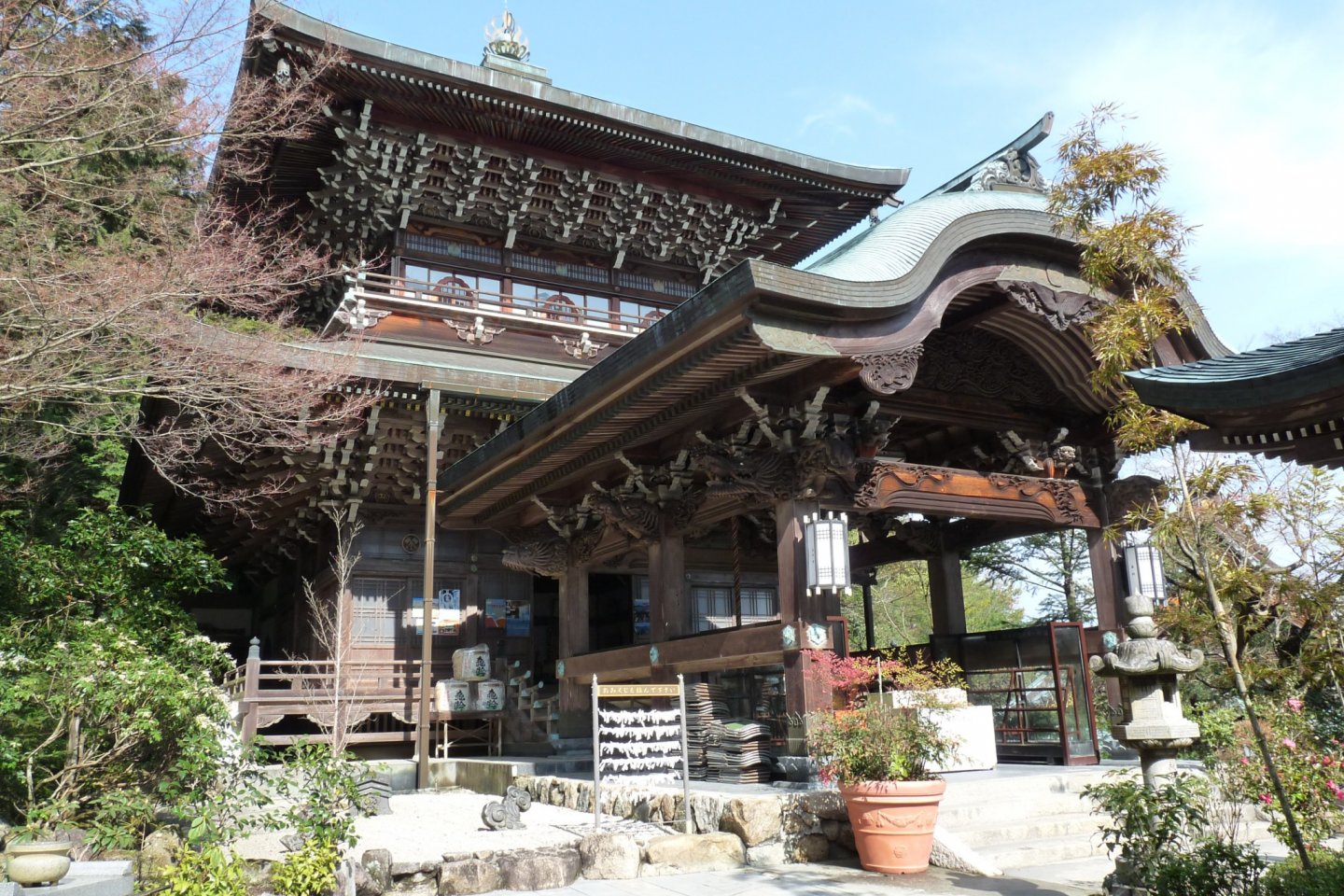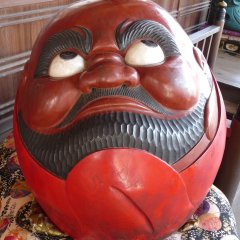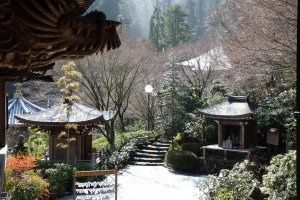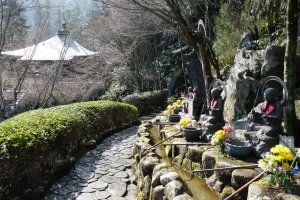The entrance to the Daisho-in is enchanting with a waterfall and a stream flowing down from Mount Misen through stone bridges, steps and arches. Next to the stream, there is a set of stone steps leading upwards, with a central reservation of prayer wheels. Legend has it that touching these wheels will bring enormous fortune and the turning of the wheels, which are inscribed with sutras, is said to have the same effect as reading them. The rays of the sun shine through the trees on to the stone steps and sparkles on the gold plating and lacquered wood of the bell tower and entrance gate. I feel like I’m entering Rivendell.
Founded by Kobo Daishi in 806, the Daisho-in Temple is the headquarters of the Omuro branch of the Shingon Buddhists. As I walk up the entrance steps, there is also a pathway down to the side. There are hundreds of small Buddha statues with (what look like) football hats on. Each small statue has a woolly hat and each one has different coloured stripes. These are the statues of the five hundred disciples of the historical Buddha, Shaka Nyoria, and each one has a different facial expression. At the top of the entrance stairs, I can hear drumming and chanting. To my left is the entrance and administration building, to my right is the main temple, where the drumming and chanting is coming from, and further up the hill are other temple buildings. There are a handful of people here, in various parts of the temple, but they’re mostly obscured by statues, monuments and stairways, so it feels like I’m alone here.
The Daisho-in Temple sits halfway up the mountain. Looking down over the bay provides a great view, through the trees, of Itsukushima, O-Torii and the town at the foot of the mountain. I leave the monks to their chanting and enter a smaller, simpler temple. Rows and rows of wooden statues sit on the shelves that run around the sides of the temple with clay ones at the back. The wooden statues of Fudo myo-o (the Immovable King) commemorate the succession of the current head priest and were donated by worshippers. At the centre is a basic altar with a drum and hanging lanterns. A black stone female Buddha sits proudly above the altar.
The pathway alongside this temple has more stone statues and headstones of various sizes and, at the end, there is the golden reclining Buddha (the Shaka Buddha entering Nirvana) built into the side of the temple. There are more stone stairways up to the higher temples. I turn to my right. I can hear only the running water of the stream and the soft chanting and drumming from the temple below. A few monks walk in and out of these higher buildings, dressed in their orange robes. I take some time in one of the temples. Inside, it’s modern and spacious. There are large colourful paintings on the walls, almost like caricatures, of the Buddhas.
At the very top of the complex, I can see all the way back down to the entrance gate and main temple. It’s still very quiet. There are stone statues all around and incense is burning. The sun is brighter, but the temples and trees throw some areas into shadow. The sun also catches, where it can, the bright colours of the bibs on some of the statues and these are in turn reflected in the shinier, more modern granite and polished stone monuments. Underneath, there is a temple building in a dark cave, the Henjokutsu. Inside it, there are rows of lanterns hanging from the ceiling and rows of tables with statues on them, winding around the cave. These are the icons of the eighty eight temples of Kobo Daishi’s pilgrimage route of the island of Shikoku. Worshippers here believe they are given the same blessing as people who have made the pilgrimage.
Taking a different route now, I pass an octagonal-shaped temple sitting over a carp pond. The Seven Deities of Good Fate are enshrined in this hall and a ceremony is held here each year on 7th July. Beyond it, I can see the waterfalls of the stream higher up the mountainside. This is a magical place and I wander around for longer. Back at the main temple, the entrance is flanked by the dark red Binzurosonzya, the Buddha of Curing Pains, and a large, bright red Buddha head. It looks like me with its bald head and goatee beard. Inside the temple, a large sand mandala lies in front of the altar. The side wall contains photographs of the Dalai Lama and the ceiling is covered with square glass paintings. In the side alcove, there’s a gold female Buddha.
I stand alone in the temple and the drumming suddenly gets louder and more intense. An hour ago I thought that Itsukushima and O-Torii were impressive but Daishoin is even better. It’s an incredible, enchanting and mystical place.




























